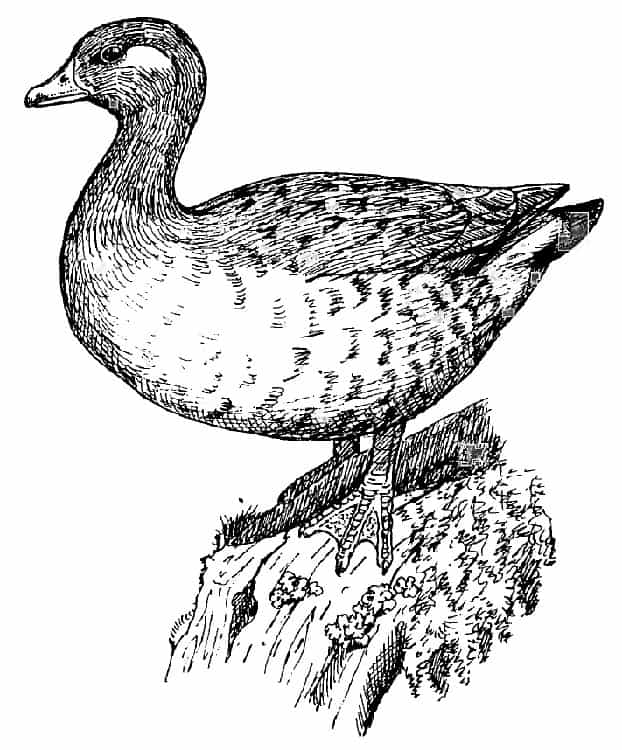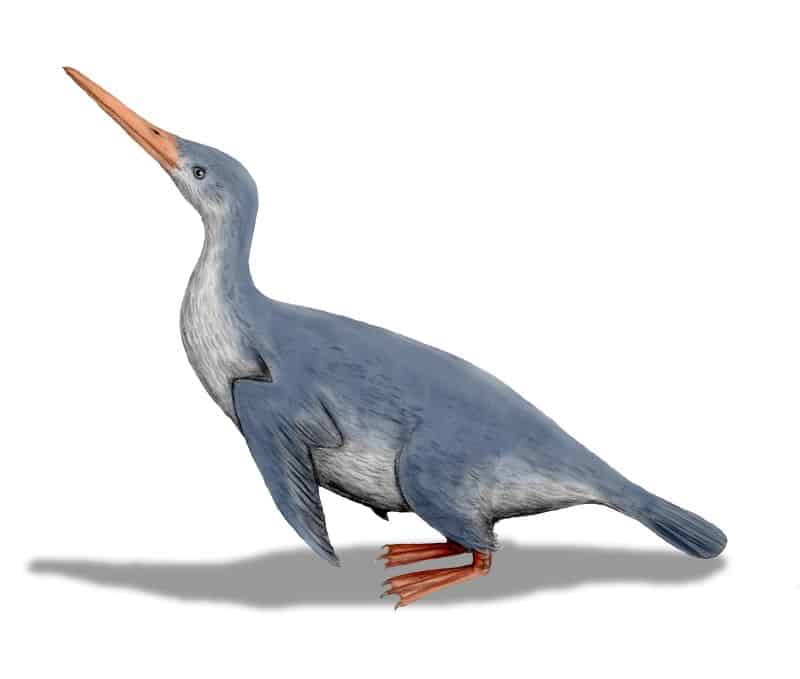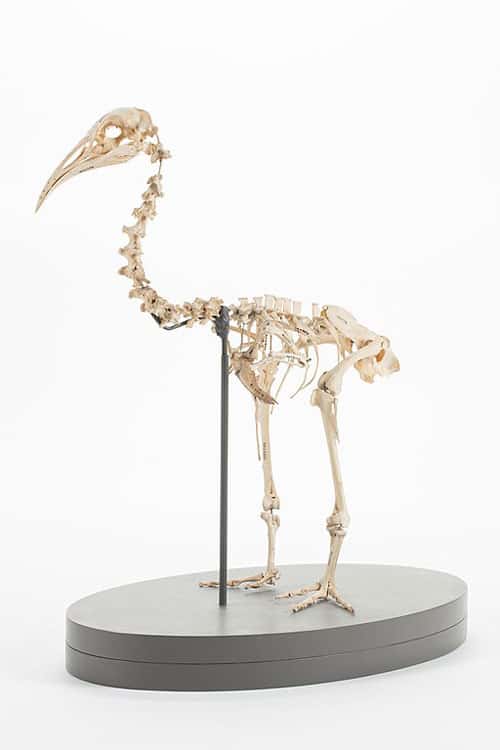Flightless birds evolved on islands across the globe since they’re so isolated with few predators. New Zealand is no exception, as it hosted a variety of flightless birds, including six that are now extinct.
Islands were a hotbed for the evolution of large flightless birds because of the unique evolutionary landscape. In New Zealand, there was a complete absence of native mammals, which also created space for the evolution of large ground-dwelling birds.
Flightless birds still exist today, but, on average, they aren’t as large as their predecessors. They are considered the only living dinosaurs, however, since they share a common ancestor with the dinosaurs. Some of their relatives include the T. rex and velociraptor.
Which flightless birds evolved specifically in New Zealand? We’ll go through some details about six of them now.
1. Finsch’s Duck

The Finsch’s duck was experiencing a population decline before humans showed up.
©H. Glyn Young, Simon J. Tonge, Julian P. Hume / CC BY-SA 3.0 – License
While no one knows for sure, the Finsch’s duck was probably flightless. Like most of the birds on our list of New Zealand’s extinct flightless birds, this bird went extinct after the introduction of human beings. However, Finsch’s duck was already on the decline before human beings hit the scene.
Predation by the Pacific rat that humans brought with them to New Zealand took its toll on the bird’s population. So did habitat destruction. Predation by humans may have occurred, but there isn’t much evidence of human consumption from the period.
2. The Moa

The moa had no vestigial wings.
©John Megahan / CC BY 2.5 – License
The moa refers to at least nine different species of flightless birds that lived in New Zealand but are now extinct. The largest of these birds grew 12 feet tall and weighed over 500 lbs. The smallest species was most likely the size of a chicken.
They went extinct about 700 years ago, which coincides with the arrival of human beings. While it isn’t proven, scientists speculate that human predation aided in their disappearance. It is known that the Polynesians who resided in their territory ate the birds and their eggs.
These flightless birds are extra unique because they have no wings whatsoever. While all the wings present on flightless birds are no longer adapted for flight, the moa had no vestigial wings whatsoever.
They had a formidable predator that is also extinct. The Haast’s eagle fed almost exclusively on the moa of New Zealand. When the moa disappeared, the Haast’s eagle quickly followed. The Maori believed that these eagles snatched children after the moa were gone.
This may have been possible since the Haast’s eagle was very large. It had a 10-foot wingspan.
3. The Waimanu

The Waimanu is the largest penguin that has ever existed.
©Size of this preview: 706 × 599 pixels. Other resolutions: 283 × 240 pixels | 566 × 480 pixels. – License
Existing 60 million years ago, the Waimanu is the largest penguin to ever exist. It weighed up to 66 lbs. and was six feet tall. Like all flightless birds, its wings were too small for flight. The Waimanu did have specialized wings intended for swimming, much like modern penguins.
While Waimanu existed millions of years ago, they aren’t the oldest penguins to ever grace the surface of the planet. They’re considered a transitional species because their build is somewhere between a flighted bird and a modern flightless penguin.
Their wingspan was huge, and they had webbed feet like modern penguins. The albatross and emperor penguins are some extant relatives of Waimanu.
4. The New Zealand Goose

The New Zealand goose spent most of its life on land.
©Griesbach / public domain – License
There were two species of this particular geese, and both were endemic to New Zealand. Their feet had less webbing than other flightless birds on the island because most of their life was spent on land. They didn’t need to travel quickly through the water.
The South Island geese were larger than the North Island goose, though both were very closely related in appearance and habitat. Because the South Island variety of the New Zealand geese was so large, they fell victim to the Haast’s eagle as well.
Human predation likely drove them to extinction before the arrival of Europeans. They were also eaten by dogs and rats that had made their way to the island.
These geese had an elongated second toe that they probably used in fights. There wasn’t a huge population of these geese because they were picky about their grassland habitats. This kept their populations centered in specific areas.
5. Hawkins’s Rail

The Hawkin’s rail went extinct sometime between the 15th and 19th centuries.
©Auckland War Memorial Museum / CC BY 4.0 – License
The Chatham Islands in New Zealand played host to these large flightless rails. They are commonly called the giant Chatham Island rail. These birds were the largest land birds in their home range.
They stood about a foot and a half tall and weighed around four and a half pounds. Because the eggs, juveniles, and adults were hunted by humans, the population was decimated. By the time Europeans surveyed the islands in the mid-19th century, domestic predators like rats, dogs, and pigs had lived on the island for centuries.
While these birds went extinct sometime during recorded history, no one knows exactly when it happened. Some think it happened as early as the 15th century, while others will argue they were still around in the 19th century.
6. Hodgens’ Waterhens
These birds were rails that lived in the grasslands and forests of New Zealand, and they were found all over New Zealand except on the Chatham Islands. These birds were small and weighed no more than half of a pound.
Hodgens’ waterhens are closely related to extant moorhens. Moorhens are also a kind of rail that are found all over the world in various forms. These birds are almost always black or off-black, just like these extinct waterhens.
Predation by the Pacific rat and humans led to their demise. This theme is shared by all the six extinct flightless birds on this list.
The photo featured at the top of this post is © Liliya Butenko/Shutterstock.com
Thank you for reading! Have some feedback for us? Contact the AZ Animals editorial team.






